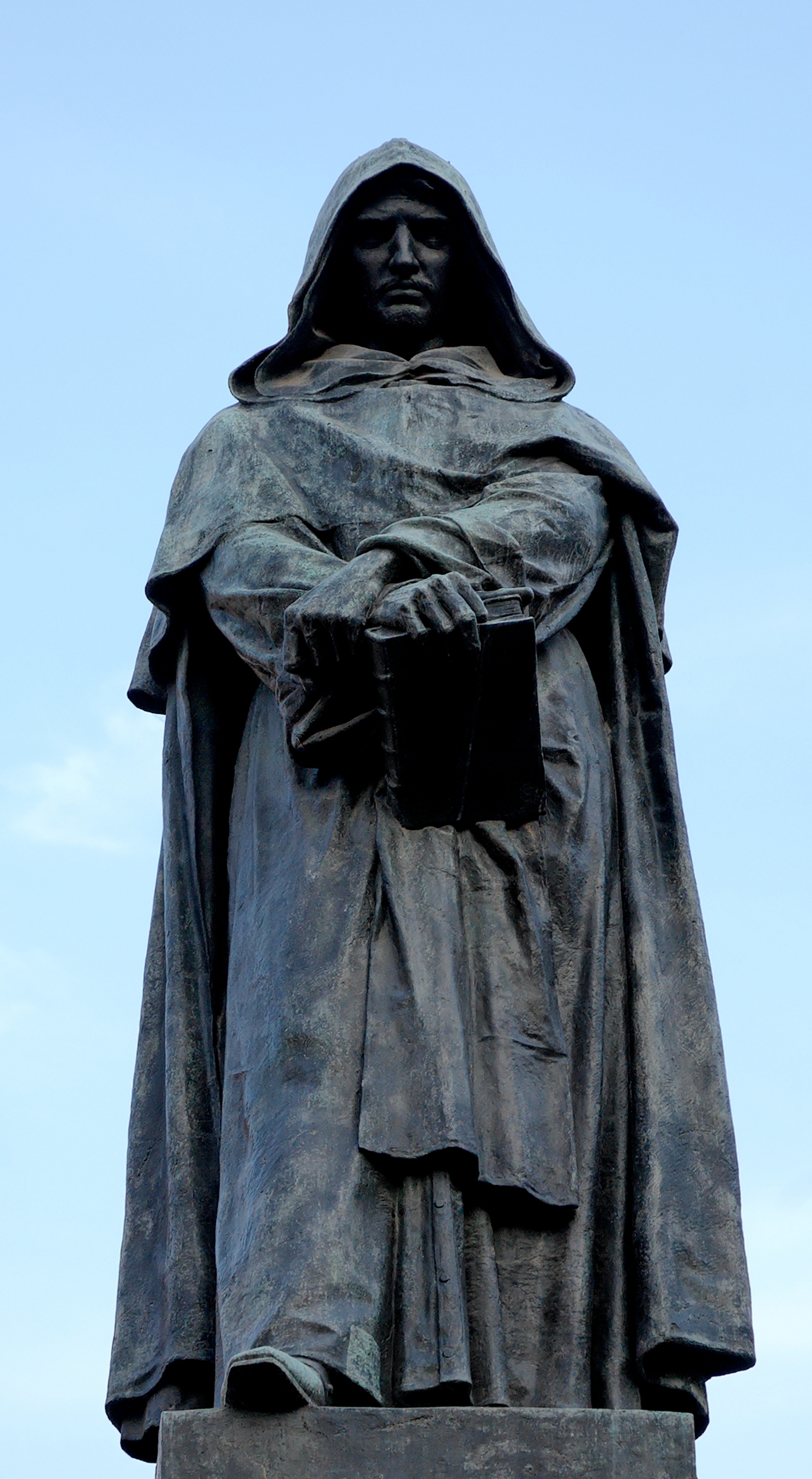Giordano Bruno reiterates the undeniable connection between medical practice and astrological observation, at the Inquisitor Cardinal Robert Bellarmino, during the process held in Rome by the Inquisition, but this treaty was considered magic, linked to other works of magic, especially to the "De rerum Principiis”. At the end of the process, Giordano Bruno, after listening unmoved to his sentence, looked his executioners in the eye and spelled his last sentence on earth: "Maiori forsan cum timore sententiam in me fertis quam ego accipiam" (Perhaps you pronounce this sentence against me with greater fear than I receive it)".
In the early morning hours of Friday, 17 February 1600, one of those processions which were all too familiar to Rome, was seen take to the Campo dei Fiori, the place where the Holy Mother Church burned his heretical sons. Giordano Bruno was led to the pile, clad as a heretic, "his tongue was imprisoned because of his wicked words". He was bound to the stake and when, at the last moment of his torment, a crucifix was held before him, Giordano Bruno turned his eyes away. When the fire died out, his ashes were dumped into the Tiber river. Bruno's works were placed on the Index Librorum Prohibitorum (1603).
(Abstract)

GIORDANO BRUNO
• Animadversiones circa lampadem lullianam
• Ars memoriae
• Ars reminiscendi, Triginta sigilli et triginta sigillorum explicatio, Sigillus Sigillorum
• Articuli centum et sexaginta adversus huius tempestatis mathematicos atque philosophos
• Artificium perorandi
• Cabala del cavallo pegaseo
• Camoracensis Acrotismus seu rationes articulorum physicorum adversus peripateticos
• Candelaio
• Cantus Circaeus
• Cena de le Ceneri
• Centum et viginti articuli de natura et mundo adversus peripateticos
• De compendiosa architectura et complemento artis Lullii
• De gli eroici furori
• De imaginum, signorum et idearum compositione
• De innumerabilibus, immenso et infigurabili
• De l'infinito, universo e mondi
• De la causa, principio et uno
• De lampade combinatoria lulliana
• De magia
• De magia mathematica
• De monade, numero et figura
• De progressu et lampade venatoria logicorum
• De rerum principiis et elementis et causis
• De triplici minimo et mensura
• De umbris idearum
• De vinculis in genere
• Figuratio Aristotelici physici auditus
• Idiota triumphans - De somnii interpretatione
• Lampas triginta statuarum
• Libri physicorum Aristotelis explanati
• Medicina lulliana
• Mordentius - De Mordentii circino
• Oratio valedictoria
• Oratio consolatoria
• Spaccio della bestia trionfante
• Summa terminorum metaphysicorum
• Theses de magia
- SUMMARY OF THE TRIAL AGAINST GIORDANO BRUNO
http://asv.vatican.va/en/doc/1597.htm





Comments